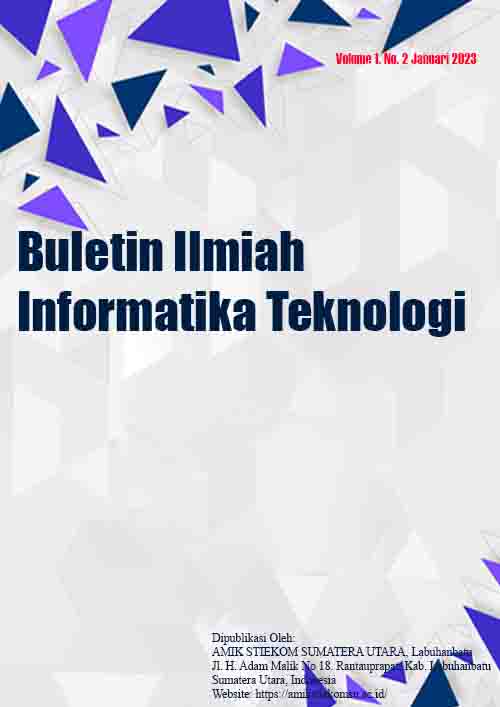Pengembangan Aplikasi Mobile Augmented Reality untuk Pembelajaran Tengkorak Manusia
Keywords:
Augmented Reality; Kedokteran; Tengkorak; Tulang ManusiaAbstract
Medical is a faculty that studies human anatomy, one of which is the skeleton of human, one of them is the human skull. The skull is one of the appendicular skeleton, currently the media for learning bones still use torso. Along with the development of technology, in this study utilizing Augmented Reality technology as an alternative in studying every part of the skull and to make it easier for students to clearly recognize each skull detail. Besides that, for other purposes this research is to save costs in purchasing torso props. Students who have Android smartphones can easily have a replacement application for human skull torso. The outcomes in this study are: physical form (print media) form of paper called marker and mobile-based augmented reality applications where they complement each other. The results of the tests carried out, the application developed has the potential as an alternative application in the learning process that can assist students in knowing the functions and names of bones..
References
. Irawan, A.B. (2013) “Pembelajaran Biologi Mengenai Sistem Rangka Manusia” Seminar Riset Unggulan Nasional Informatika dan Komputer, FTI UNSA, Va.,2 No1.
. Parker, S. (2016) Ensiklopedia Tubuh Manusia, Edisi kedua, Erlangga, Jakarta.
. Suharso, A., dan Muhaimin, M. (2016) “Media Belajar Kerangka Manusia 3D Berbasis Magicbook Augmented Reality”: SMPN 1 Kota Baru, UNSIKA Syntax Jurnal Informatika, Vol. 5 No. 1, 1- 15.
Umeda, R., Seif, M. Atef., Higa, H., dan Kuniyoshi, Yukio. (2017) “A Medical Training System Using Augmented Reality” ICIIBMS. Track 3: Bioinformatics, Medical Imaging and Neuroscience, Okinawa, Japan
. Radhiyah, A., Mukhtar, I., Muhaimin, A., W, S. Kusuma., dan Basuki, K. Dwi., (2015) “Perangkat Lunak Pengenalan Uang Kertas Sebagai Alat Bantu Tunanetra Dengan Keluaran Audio” Seminar Nasional Sistem Informasi Indonesia.
. Sudarmilah, E., dan Ary, W. Pungky. (2016) “Aplikasi Augmented Reality Game Edukasi untuk Pengenalan Organ Tubuh Manusia”, Khazanah Informatika, Vol. II No. 1.
A. Karim, S. Esabella, M. Hidayatullah, and T. Andriani, “Sistem Pendukung Keputusan Aplikasi Bantu Pembelajaran Matematika Menggunakan Metode EDAS,” vol. 4, no. 3, 2022, doi: 10.47065/bits.v4i3.2494.
M. Bobbi, K. Nasution, S. Suryadi, and A. Karim, “Sistem Pendukung Keputusan Dalam Rekomendasi Kelayakan nasabah Penerima Kredit Menerapkan Metode MOORA dan MOOSRA,” vol. 4, no. 3, pp. 1284–1292, 2022, doi: 10.47065/bits.v4i3.2610.
Downloads
Published
Issue
Section
License
Authors who publish with this journal agree to the following terms:
- Authors retain copyright and grant the journal right of first publication with the work simultaneously licensed under Creative Commons Attribution 4.0 International License that allows others to share the work with an acknowledgment of the work's authorship and initial publication in this journal.
- Authors are able to enter into separate, additional contractual arrangements for the non-exclusive distribution of the journal's published version of the work (e.g., post it to an institutional repository or publish it in a book), with an acknowledgment of its initial publication in this journal.
- Authors are permitted and encouraged to post their work online (e.g., in institutional repositories or on their website) prior to and during the submission process, as it can lead to productive exchanges, as well as earlier and greater citation of published work (Refer to The Effect of Open Access).











